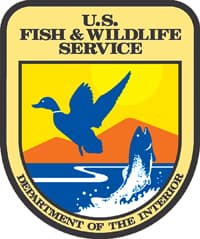Service to Release Endangered Winter Chinook Salmon to the Sacramento River February 10
OutdoorHub 02.10.14

Approximately 193,000 broodyear 2013 winter Chinook salmon reared at Livingston Stone National Fish Hatchery (NFH) in Shasta City, Calif., will be released Monday, February 10 into the Sacramento River at the Caldwell Park boat launch (river mile 299) in Redding, the U.S. Fish and Wildlife Service announced today.
Releases generally are timed to coincide with periods of rainfall, which increases flow and turbidity of rivers, enhancing survival of the fish as they make their way to the ocean. Although this is a record dry year in California this release will occur coincident to the storm hitting northern California this weekend to take advantage of the resultant increased flow and turbidity in the river. Hatchery staff plans to release the fish at dusk at Caldwell Boat Launch.
The release of winter Chinook salmon juveniles from Livingston Stone NFH normally occurs in late-January or early February, a period which, for the past two decades, has resulted in relatively good survival of the migrating juveniles as evidenced by the number of hatchery-origin winter Chinook salmon adults estimated to have returned to the upper Sacramento River. The hatchery produces about 200,000 Chinook salmon each year.
In previous years, the Service experimented with trucking juvenile fall-run Chinook to the Sacramento River Delta for release in San Pablo Bay. However, science now shows that although trucking young salmon downstream can improve overall survival, the process interferes with the imprinting cycle, causing adult salmon to “stray” instead of returning to their river area or stream/creek of origin. An increased straying rate of returning adults associated with a trucked release of winter Chinook salmon would not be consistent with the program’s goal to have returning fish commingle and spawn with natural-origin winter Chinook salmon in the upper Sacramento River. Further, as the upper Sacramento River currently provides the only suitable habitat for the successful spawning of winter Chinook salmon, survival/successful spawning of any adults that do not return to this area (i.e., stray to another location) is unlikely.
The fish will be closely monitored as they migrate downstream and through the Delta. The Service estimates it will take approximately three to five weeks for the first of these fish to show up at the Knights Landing screw traps and likely a month before they start showing up in upcoming Sacramento River surveys or at the Delta Cross Channel gates. All juvenile fish have had their adipose fin clipped and carry a coded wire tag.
About 300 of these fish will be acoustically tagged. Acoustic tag detectors have been installed at the gates and should detect these fish if they do reach the gates.
The Livingston Stone NFH was constructed in 1997 to assist in the recovery of endangered winter Chinook salmon in the upper Sacramento River. The hatchery is managed as part of the Service’s Coleman National Fish Hatchery Complex, headquartered in Anderson, Calif.

